Ask Ethan #102: Is Everything In The Universe The Same Age?
There’s no such thing as absolute time, but after 13.8 billion years, is anything relatively different?
“The total number of people who understand relativistic time, even after eighty years since the advent of special relativity, is still much smaller than the number of people who believe in horoscopes.” –Yuval Ne’eman
It’s been 13.8 billion years since the Big Bang, something we’ve been able to date from a variety of lines-of-evidence. But that’s the amount of time that has passed for us since the Big Bang; since time is relative, what does that mean for observers in other parts of the Universe? After sifting through your submitted questions and suggestions, I chose this one from Rafael Bernal:
If time is relative, is there an absolute time that rules the entire Universe? When we say that the Universe is 13.8 [billion] years old, does that time apply only to Earth, or the to the whole Universe?
Our Earth exists in our galaxy, and everything that we perceive within it is that same 13.8 billion years old. Well, almost.
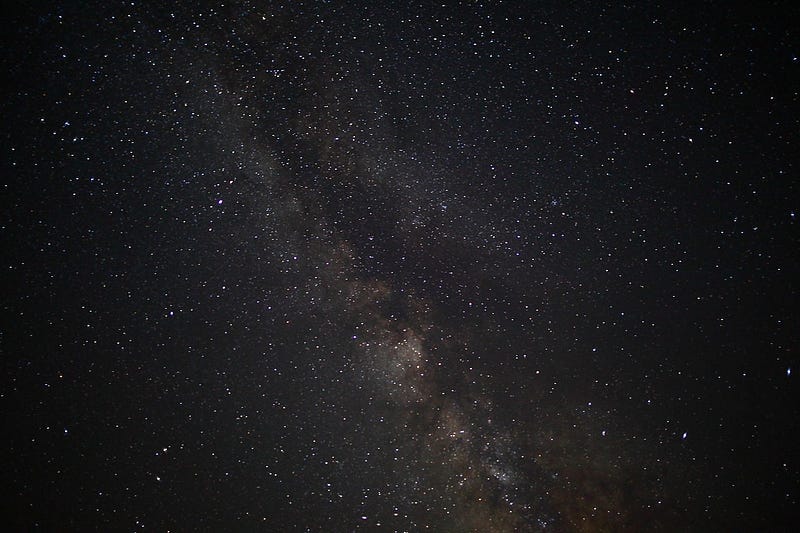
You see, the planets, stars and other points-of-light we see in our night sky aren’t the exact same age as we are. Because the speed of light is finite, if we look at a star that’s say, 100 light years away, we’re seeing it as it was 100 years ago, not as it is today. When you compare that to 13.8 billion years, however — even if you take a star all the way across our galaxy at 100,000 light years away — that difference is insignificant. The difference between 13,800,000,000 and 13,799,900,000 years isn’t worth very much at all.
But if we start looking at other galaxies — at very distant galaxies, that story begins to change.
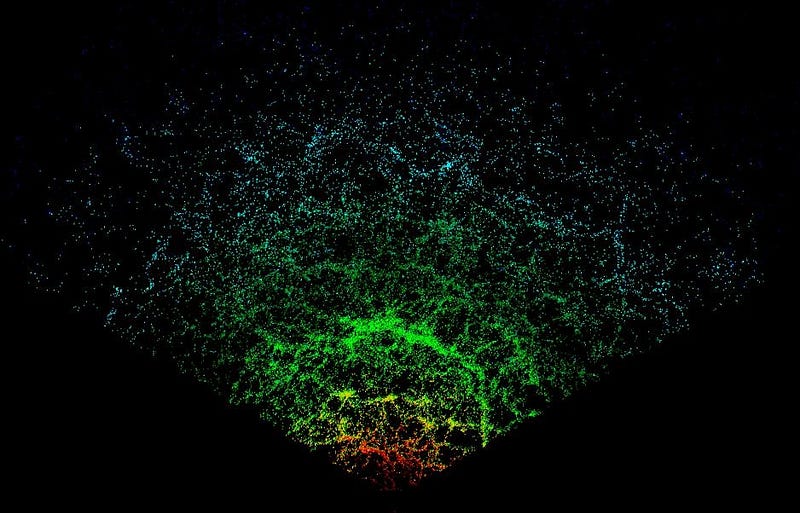
Every “point” in the image above is a galaxy unto itself. The green filament you see is a feature known as the Sloan Great Wall, and is located approximately a billion light years from Earth. The galaxies we’re seeing in that structure are only approximately 12.8 billion years old, and the farthest galaxies seen in the image above are even younger than that.
In fact, as we look farther and farther away, we’ve found galaxies that go as far back as when the Universe was less than one billion years old, and was just a few percent of its current age.
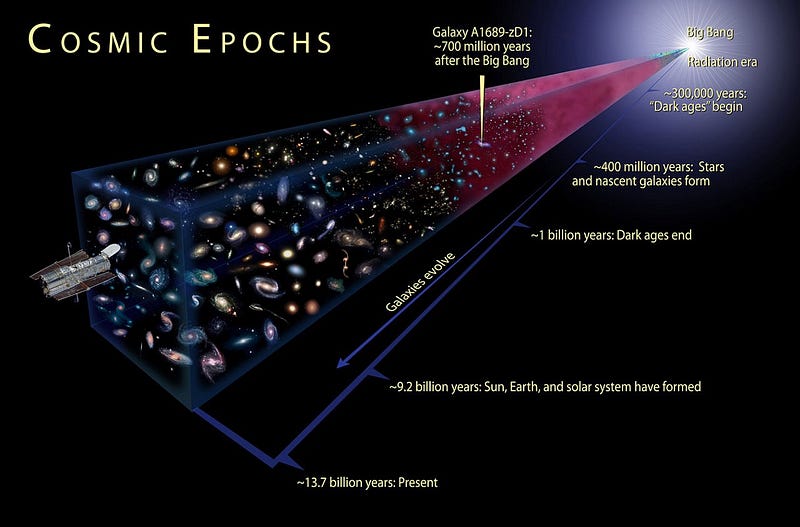
If our telescopes (and our light-gathering power) were good enough, we’d be able to see individual stars with very few heavy elements in them, as well over 99% of the atoms at that time were still the pristine hydrogen and helium formed from the Big Bang. There would be almost no carbon, oxygen, silicon, phosphorus, iron and more that requires stars to make.
Because of that, there would be practically no rocky planets, no organic molecules, and no chance of life in these locations. When we see these galaxies in their early, pristine state, we are literally looking back in time.
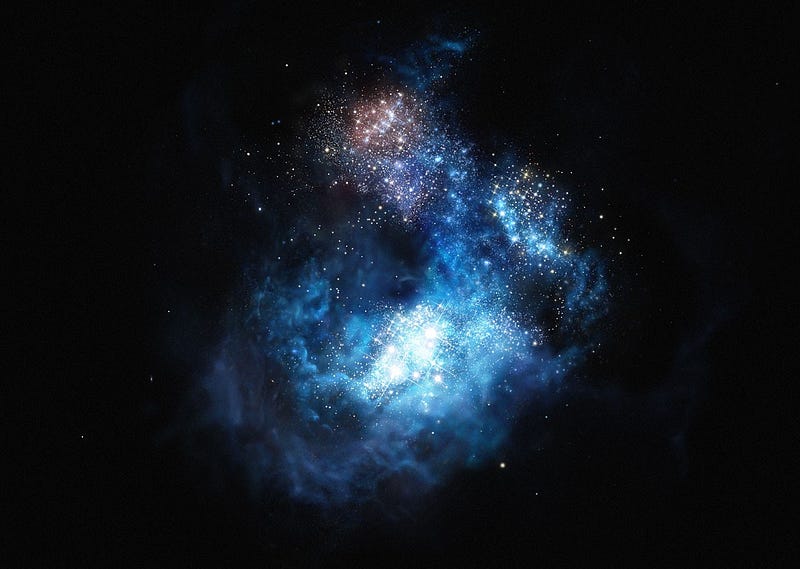
But that’s a very important point here! We are not looking at these galaxies as they exist today, but rather it is our perspective: we are the ones looking back in time!
To someone on a distant star, in a distant galaxy or tens of billions of light years across the Universe, we would be the ones who appeared to be in the past. To someone 100 light years away, there would never have been signs of a nuclear bomb on Earth; we would never have invented the computer; no television broadcasts would ever have been transmitted; even amplifying vacuum tubes wouldn’t have been invented yet. To someone in a galaxy a billion light years away, our Sun would appear younger and dimmer, the Earth would have housed only single-celled life, with no discernible plants or animals, and our planets’ continents would be mostly barren, covered only in ice and dirt.
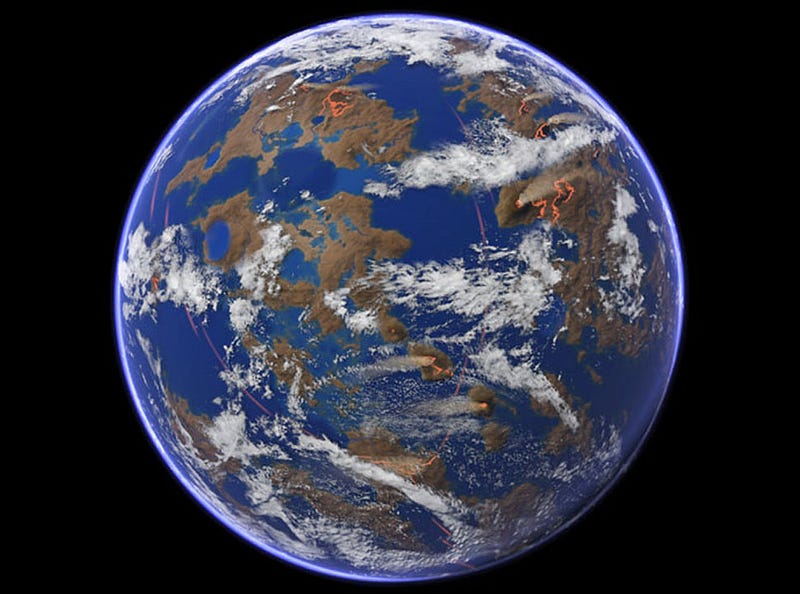
And most frighteningly, to someone viewing what would become us from the most distant, visible galaxies, our Earth and Sun would not only not exist yet, but most probably neither would the Milky Way. Rather, we’d be a series of small gas clouds and proto-galaxies, yet to merge into the spiral structure that would come to form our home. Only the oldest, most ancient globular clusters — now found in the halo of our galaxy — would exist, and they would be rich with hot, young, blue stars, all of which have been long gone for billions of years.
To any of these observers, whether on another star, in another galaxy or all the way across the Universe, they would see a very similar Universe to us:
- A Universe that’s 13.8 billion years old today.
- A Universe where, in every direction that they look, they appear to be seeing farther back into the past.
- A Universe in which the cosmic microwave background has cooled to 2.725 K today.
- A Universe in which the great cosmic web appears indistinguishable from the cosmic web we see.
- And a Universe where, if they looked back at us, they would see us exactly as long ago as we see them.
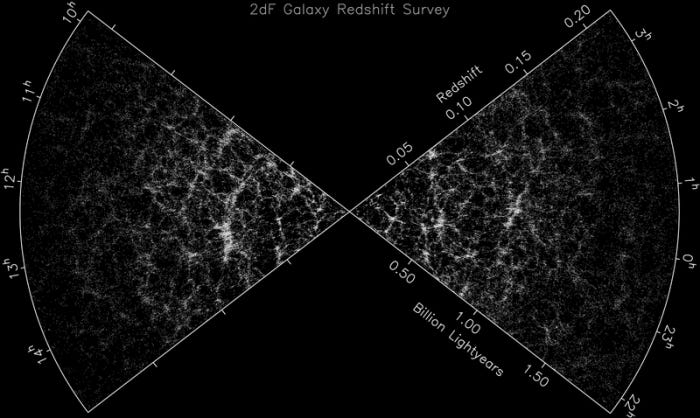
With all of this in mind, doesn’t it seem like there’s some sort of absolute time, after all?
While it might appear that way, it turns out this isn’t quite the case! What turns out to be true is that the Big Bang occurred everywhere in space 13.8 billion years ago, and this is true when viewed from all the galaxies out there. But what if there were galaxies out there that weren’t moving at hundreds or thousands of kilometers-per-second relative to the rest frame of the cosmic microwave background, but were moving at hundreds of thousands of km/s, or very close to the speed of light?
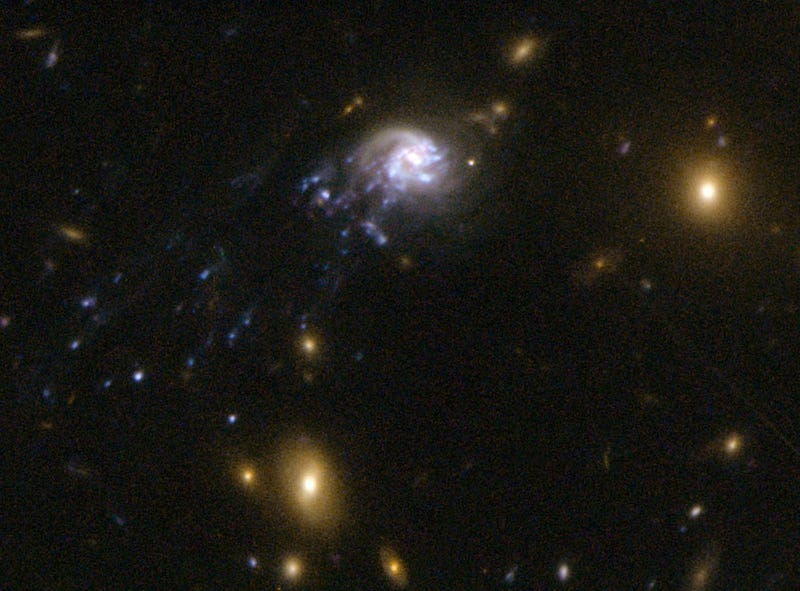
Just as time passes differently for something moving close to the speed of light on Earth — a particle, a train or a person — if we had a planet, star or galaxy that was moving close to the speed of light, and had been for a long time, it would be significantly younger than the rest of the Universe!
Imagine the following scenario: back when the Universe was just a billion years old, a galaxy was — thanks to repeated gravitational interactions — accelerated to 99% the speed of light. For the 12.8 billion years that have passed for us since that time, only 1.8 billion years have passed for that lucky (or unlucky) galaxy. Compared to galaxies like our own, it will appear smaller, younger, bluer and “stunted” in its growth.
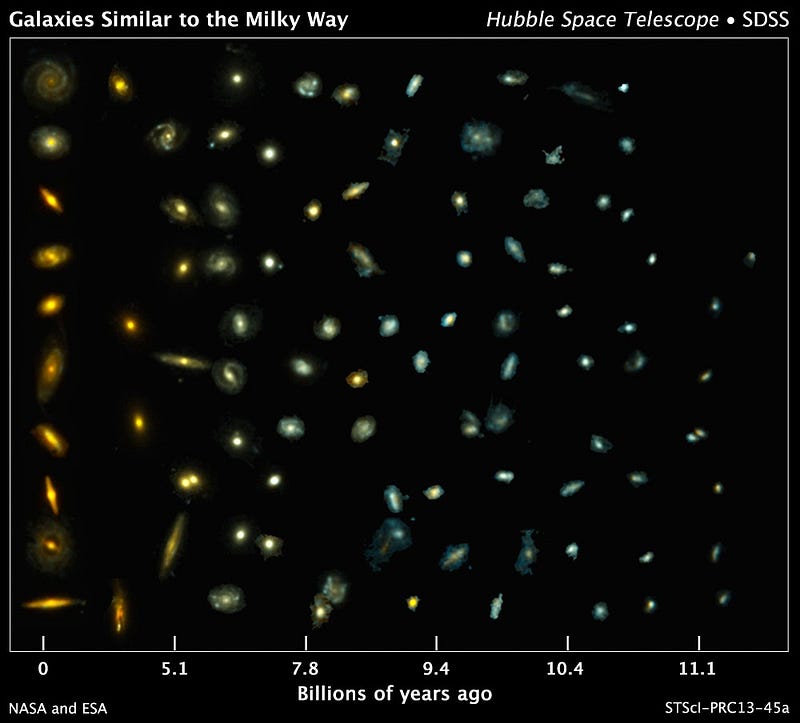
So the Universe should appear the same for almost all observers anywhere, with the same amount of time having passed and the Universe having the same large-scale properties pretty much everywhere. But for a few select observers — the ones who’ve spent some significant time moving close to the speed of light relative to the CMB’s rest frame — the Universe will be quite bizarre. As soon as they slow down relative to the CMB and come to rest, they’ll find themselves as young ones in a strangely old Universe.
The fact that it’s been 13.8 billion years since the Big Bang is a fact that’s applicable to anyone and everyone within our observable Universe, but if you were (or are) close to the speed of light, you might be awfully reluctant to believe it!
Have a question or suggestion for Ask Ethan? Submit it here for our consideration.
Leave your comments at our forum, and support Starts With A Bang on Patreon!





